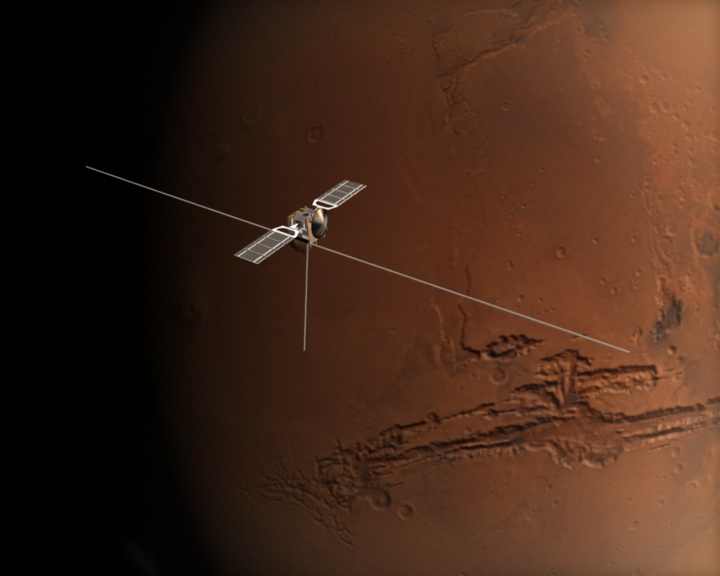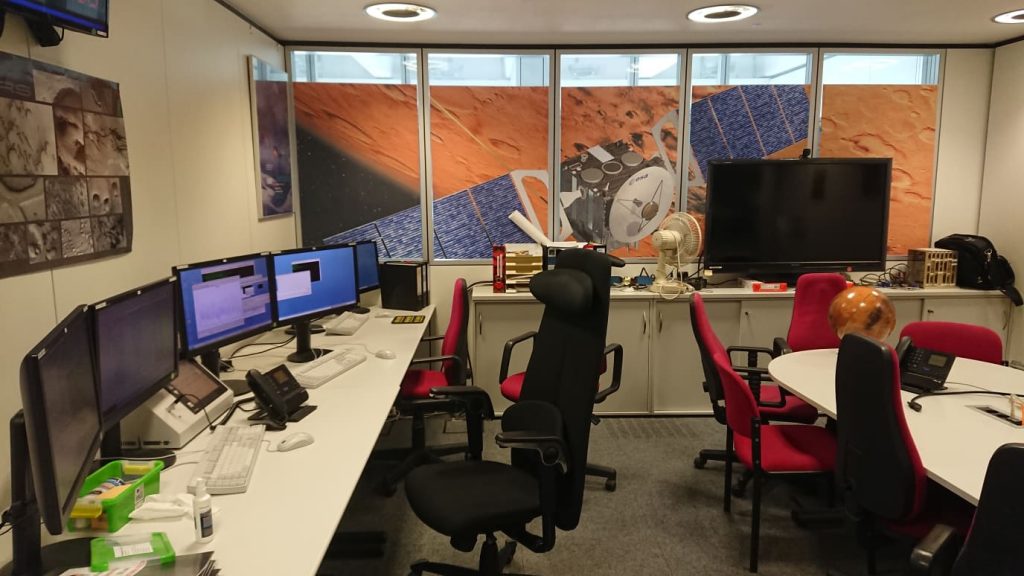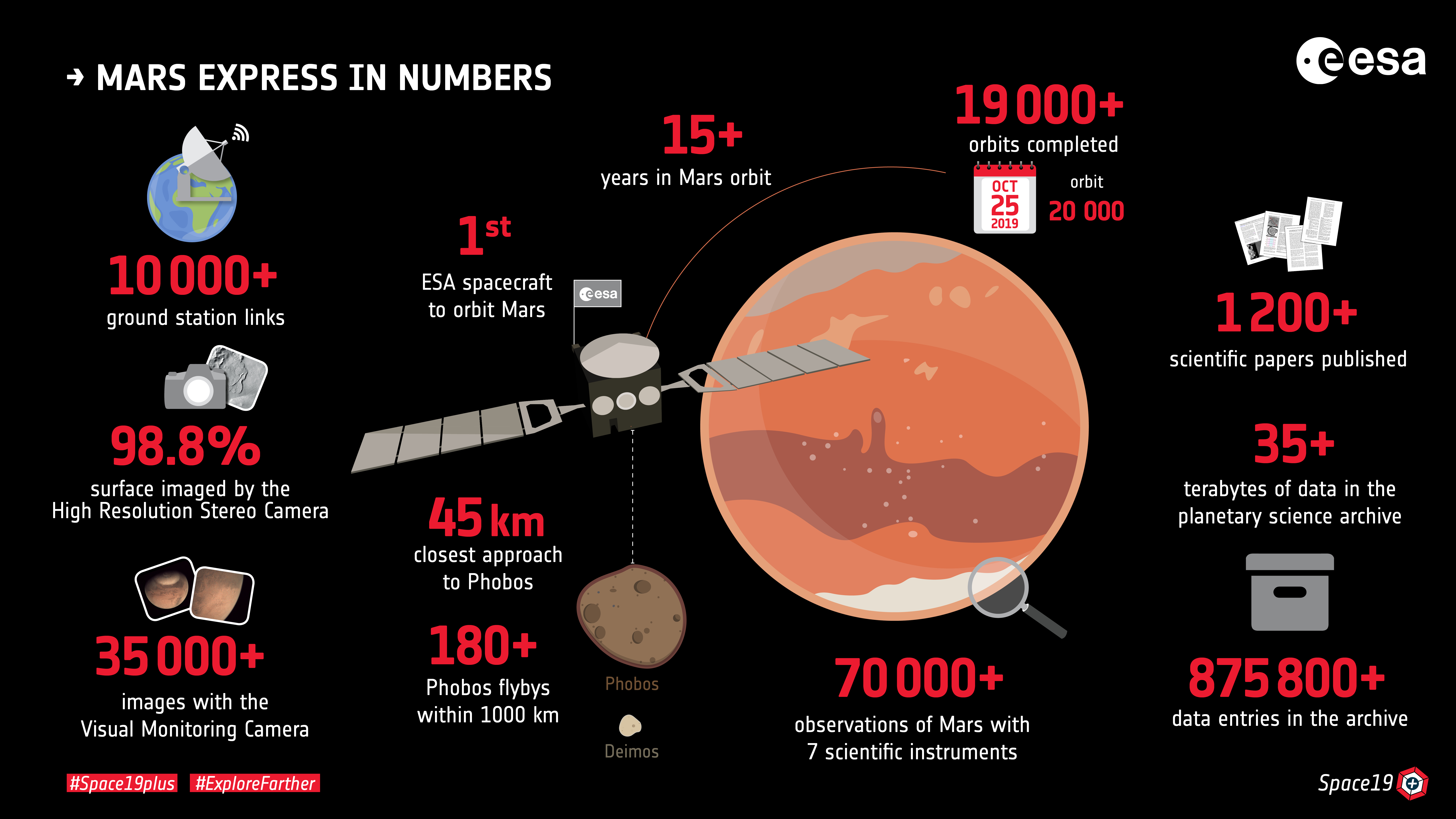In response to the Covid-19 outbreak, people across the globe are being asked to work from home where possible in order to limit personal contact and reduce the further spread of the infection.
As of Monday 16 March, the majority of staff and contractors working at ESA mission control began doing just this.
But what implications does this have for the 17-year-old Mars Express spacecraft, currnently in orbit around the Red Planet?

For many missions it is possible, if needed, to put the spacecraft into Safe Mode, where it is ‘parked’ in a stable position with all non-essential systems switched off. For Mars Express however, an extended time in this mode would not be very safe at the moment.
Mars Express is currently in an eclipse season, where in every orbit the spacecraft passes through the shadow of Mars, preventing power from being generated by the solar arrays.
As the spacecraft passes into the martian shadow, it relies on batteries to supply it with power and on internal heaters to keep it warm. To ensure the 17-year-old batteries are not too deeply discharged during this period, the team needs to adjust the heaters before, during and after each eclipse to keep vital spacecraft systems at the right temperature to function. This activity reduces the overall heater power consumption by around 30%.

Mars Express uses star trackers and gyros to determine which direction it is pointing in. The gyros are now very old and are switched off most of the time to preserve their remaining runtime. The software update performed in 2018 is working well and has made it possible to dramatically increase how long the life remaining in the units can be stretched out.
The gyros do need to be switched on once per day for routine maintenance activity (to ‘dump’ momentum from the reaction wheels, which allow the spacecraft to change its attitude, the direction in which it points). This isn’t possible without the ability to communicate with and command the mission – another reason that Safe Mode isn’t an option for the old martian orbiter.

This all requires people on hand to guide Mars Express back into the light. In Safe Mode, none of these commands would get on board. This means the load on the batteries would increase and crucially the gyros would remain on, eating into their remaining lifetime.
At present, the team is happy to report that routine science operations are continuing through a reduced presence on site, and adaptation of the operating procedures to fit this difficult situation.
In a case the team were completely unable to get on site, they have generated an emergency commanding timeline which prepares the spacecraft for eclipses, avoids pointing the star trackers at Mars, turns the gyros on and off as required and performs other tasks to keep the spacecraft safe.
This, if activated would keep the spacecraft safe for about three weeks. As each week passes the team adds another week of safety commands to the plan, so there are always three weeks’ worth of commands available to be sent to the spacecraft if required.
However, as there is limited space on board the spacecraft to store commands, the team has had to remove any commands that are not necessary to keep the spacecraft safe.
Unfortunately, this includes the commands that would be needed to operate the science instruments. If this emergency plan is activated, science observations would therefore be suspended for the duration.






Discussion: no comments